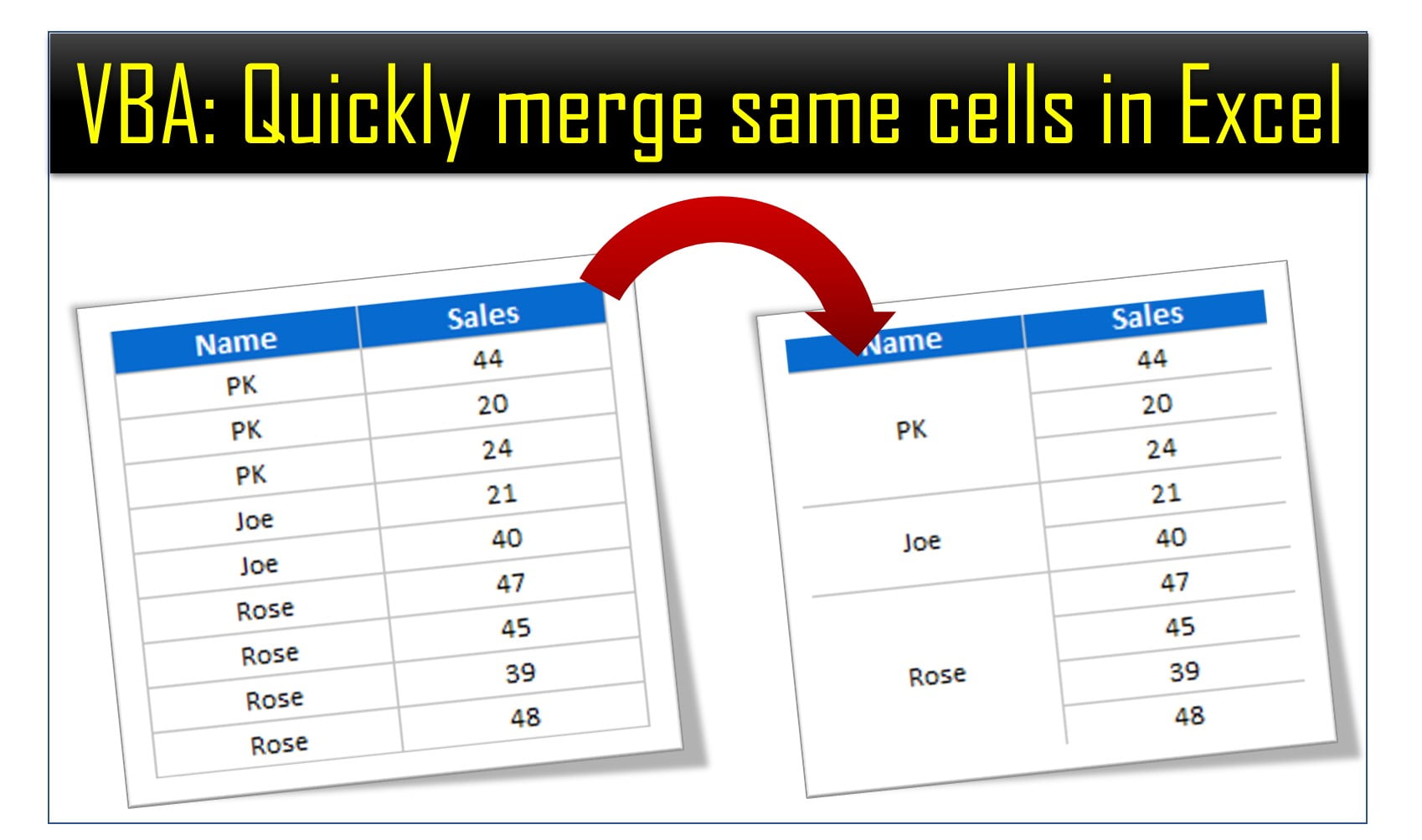
- #Merging cells in excel to flat data in vba how to#
- #Merging cells in excel to flat data in vba code#
- #Merging cells in excel to flat data in vba download#
That wraps Step 2 – Exploration for Phase 2, which means it’s time to jump into Step 3 – Execution! (line 85) lngLastDstRowNum is the last-occupied row on the Destination Worksheet, which is where we will paste data TO.(line 81) lngLastSrcColNum is the last-occupied column on the Source Worksheet, which determines the bounds of our (eventual) loop through all of the data columns.(line 80) lngLastSrcRowNum is the last-occupied row on the Source Worksheet, which is where we will copy data FROM.On lines 80 through 85, we assign three variables to make our copy / paste (which is the next step in Phase 2, Execution) work smoothly:

Much like Phase 1, we use a For Each loop on line 71 to iterate through each Worksheet, and on line 74 we make sure that the final Destination Worksheet is skipped. The Step 2 – Exploration in Phase 2 takes place between lines 71-85. Get excited like Charlie y’all, we’re almost done! Line 58 starts by kicking off a For Each loop to iterate through each Key in dicFinalHeaders.įinally, on line 59, we write each header column name to its appropriate column number on wksDst, our Destination Worksheet - a cinch, since dicFinalheaders(varColHeader) gives us the column number.īoom! That wraps up Phase 1 and sets us up for an easy Phase 2 - take a moment to celebrate and enjoy this gif of Charlie shooting a gun. The last bit of Step 3 – Execution for Phase 1 happens on lines 58-60, which is where we set up the Destination Worksheet with the header column names we just collected. Since we are inside the For Each wksSrc In ThisWorkbook.Worksheets loop, those steps are repeated for each Worksheet as well! (line 44) Increment the lngFinalHeadersCounter variable so the next new column header name points to the next column number.(lines 42-43) If that column name is NOT in the Scripting.Dictionary from step #2 above, add it as the Key, with lngFinalHeadersCounter, representing the target column number, added as the Item.(line 41) Check dicFinalHeaders to see if it already contains this column name (i.e.(line 40) Assign strColHeader to be the leading-and-trailing-spaces-removed column header name.Inside this loop, we will repeat the next 4 steps for each column header: Line 36 kicks off a For…Next loop through this Worksheet’s occupied-columns, which is where our Step 3 – Execution takes place for Phase 1.
#Merging cells in excel to flat data in vba download#
You’re using the VBA Toolbelt, right? Please download it, use it as your new project template, and save yourself TONS of repetitive coding…īut let’s move on, as our Step 2 – Exploration for Phase 1 is done! Once we are sure we are NOT on the Destination Worksheet, we identify the last-occupied column on line 35 using LastOccupiedColNum from the VBA Toolbelt. The Step 2 – Exploration of Phase 1 takes place between lines 26-40.įirst, we start looping through all of the Worksheets in ThisWorkbook on line 26, ignoring the Destination Worksheet ( wksDst) on line 29.

Count of dicFinalHeaders, because we will need to know when new columns are added (and will use this variable for comparisons)

#Merging cells in excel to flat data in vba code#
Let’s review the code using the 4-step VBA process as our guide: Here’s a link to the code above so you can review it side-by-side with the walk through below. Here’s the scoop y’all - our It’s Always Sunny sales data can be combined with this macro: Phew! Now we can get back to the task at hand… combining data!
#Merging cells in excel to flat data in vba how to#
This is how to add the Microsoft Scripting Runtime Reference


 0 kommentar(er)
0 kommentar(er)
